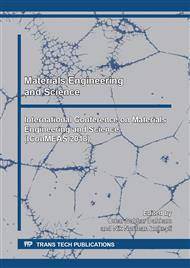p.117
p.125
p.131
p.136
p.140
p.147
p.156
p.167
p.173
Study the Effects of Shari Lake on the Physical and Chemical Properties for Groundwater in Samarra City
Abstract:
We design hydro geochemical study to show the effect of Shari Lake on Samarra groundwater. tow samples (Jelam 1,Jelam 2 ) that nearby Shari lake and other samples taken from different location from Samarra city ( Efraz ,SDI factory , Golden Mosque, Samarra university ). Then sent samples to specific laboratory for chemical and microbial test .the result shows the locations (Jelame 1, Jelame 2) have highest value in PH, but SDI factory location has highest value in Sulfate. The result show affect ground water in this city by salt and mineral that found in watershed and ground structure specially limestone that flow throw ground that lead to dissolve salt and mineral then arise the value of studied data.
Info:
Periodical:
Pages:
173-178
Citation:
Online since:
January 2020
Keywords:
Price:
Сopyright:
© 2020 Trans Tech Publications Ltd. All Rights Reserved
Share:
Citation:


